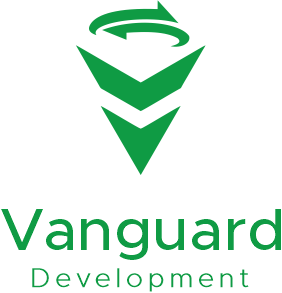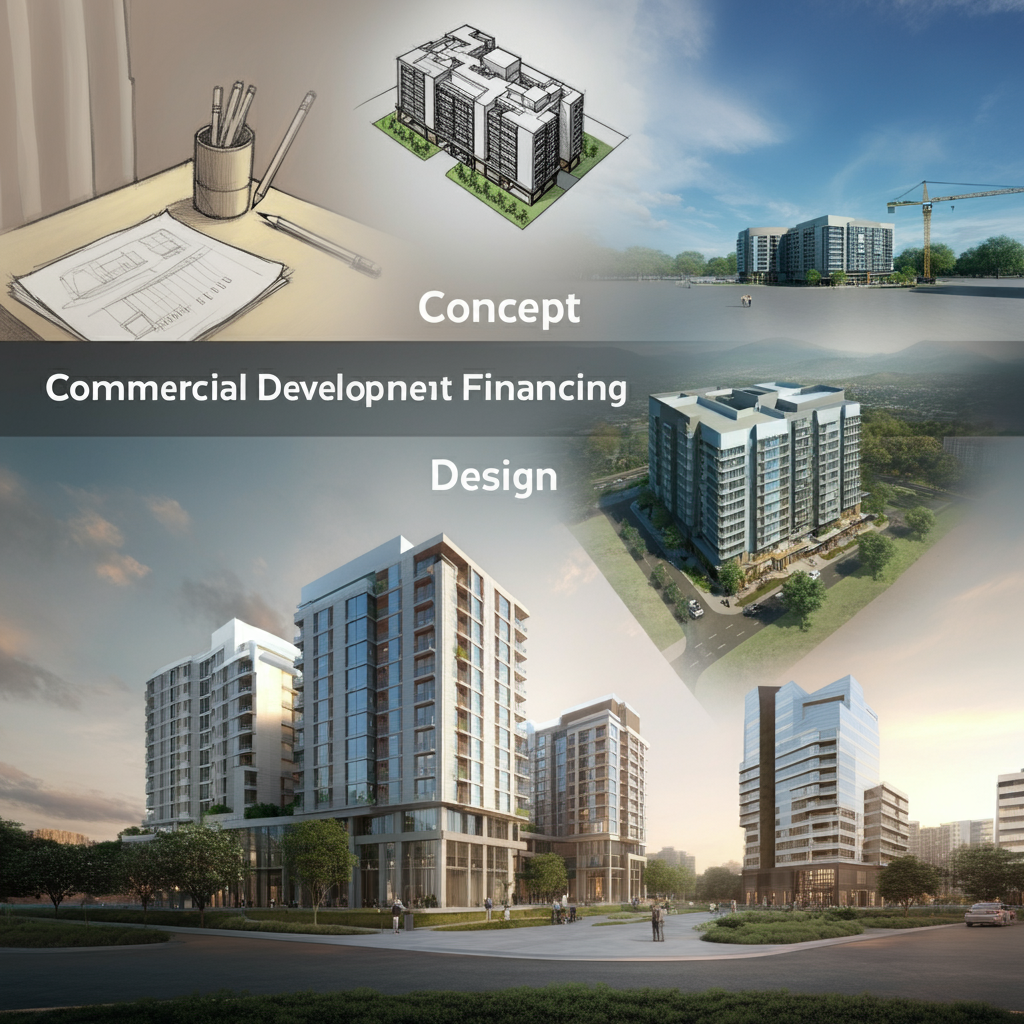From Concept to Completion: The Journey of Commercial Development Financing
Bringing a commercial development project to life is an ambitious and complex journey, requiring strategic planning, risk management, and, perhaps most importantly, the right financing. Securing and managing funds at each phase of the project—from initial concept through to completion—is essential to transforming a vision into reality. In this guide, we’ll explore the phases of commercial development financing, the options available at each stage, and how to maximize resources along the way.
1. Concept Phase: Laying the Financial Foundation
At the beginning of a project, developers start with a vision. However, turning that vision into a feasible plan requires initial funding to cover site analysis, market research, and early design work. This phase is foundational, as the project’s financial outlook is established through cost estimates, feasibility studies, and investor pitches.
Key Financing Options:
- Seed Capital: For new or early-stage developers, seed capital from personal funds, angel investors, or friends and family can cover early expenses.
- Angel Investors & Private Equity: These investors often come on board at the concept stage, providing capital in exchange for equity or future returns.
- Crowdfunding: For community-centered projects, crowdfunding platforms can attract early interest and initial funds, providing a proof of concept.
Critical Actions:
- Feasibility Studies: Identify market demand, environmental considerations, and profitability potential.
- Financial Modeling: Outline anticipated costs, revenues, and financing needs to attract investors and lay a solid groundwork for future funding.
2. Pre-Development Phase: Securing Initial Project Financing
With a well-defined plan and supporting research, the pre-development phase focuses on securing the larger financial commitments needed to bring the project to life. Funding during this stage typically covers detailed designs, permits, site acquisition, and preliminary construction planning.
Key Financing Options:
- Land Acquisition Loans: Short-term loans to purchase the land, often refinanced later with longer-term project financing.
- Mezzanine Financing: This hybrid debt-equity financing fills funding gaps and offers flexibility without requiring full equity dilution.
- Joint Ventures (JVs): Partnering with experienced firms or institutional investors through JVs helps spread risk and gain access to more extensive resources.
Critical Actions:
- Detailed Project Planning: Refine project goals, timelines, and cost estimates, addressing all pre-construction needs.
- Entitlements and Permits: Secure necessary approvals to ensure the project can proceed, factoring in associated costs.
3. Construction Phase: Bringing the Project to Life
The construction phase is often the most capital-intensive stage, requiring a substantial influx of funds to cover labor, materials, site work, and other hard costs. The reliability of the financing structure here can impact the timeline, quality, and completion of the project.
Key Financing Options:
- Construction Loans: These short-term loans, typically interest-only during construction, cover material and labor costs. They are often structured to be converted into a permanent mortgage post-construction.
- Bridge Loans: If project delays or cost overruns occur, bridge loans offer short-term financing to keep the project moving.
- Contractor Financing: In some cases, contractors may finance their own work, especially for smaller projects or through builder partnerships.
Critical Actions:
- Cost Management: Implement robust budget tracking and expense management to minimize risks of overruns.
- Milestone-Based Drawdowns: Many construction loans are disbursed based on completed milestones, so maintaining a steady construction pace ensures continued access to funds.
4. Post-Construction Phase: Converting to Long-Term Financing
With construction complete, the project transitions into an operational phase, generating revenue through leasing or sales. Converting construction loans into permanent financing at this stage can help stabilize cash flow and reduce debt repayment pressure, paving the way for sustainable long-term operations.
Key Financing Options:
- Permanent Mortgages: Refinancing with long-term mortgages provides lower interest rates, allowing for manageable debt servicing over time.
- REITs and Asset-Backed Securities: For larger projects, developers may sell the property to a Real Estate Investment Trust (REIT) or securitize the asset to generate funds.
- Equity Recapitalization: In cases where equity partners want to exit, recapitalizing the project with new investors ensures continuous financing while offering liquidity for initial investors.
Critical Actions:
- Property Valuation: Conduct an appraisal to determine the value for long-term financing, ensuring favorable loan terms.
- Revenue Generation Strategy: Set rental rates, finalize leasing agreements, or begin sales to generate steady cash flow for debt servicing.
5. Stabilization Phase: Generating Consistent Cash Flow
In the stabilization phase, the property is leased and operating at a sustainable occupancy level, creating consistent income streams. This is an ideal stage for refinancing to reduce debt costs or for attracting investors seeking stable, cash-flow-generating assets.
Key Financing Options:
- Cash-Out Refinancing: Allows owners to refinance based on the increased property value, extracting equity for new projects.
- REIT Investments: Selling or leasing to REITs during stabilization provides an exit strategy for developers while transferring management responsibilities.
- Tax-Incentive Financing: Explore tax credits or incentives, such as Opportunity Zone funding, to reduce tax liabilities and increase profitability.
Critical Actions:
- Optimize Operations: Maximize occupancy rates, reduce operating costs, and improve tenant satisfaction.
- Investor Relations: Maintain transparency with stakeholders and investors, providing financial reports and updates.
6. Maturity Phase: Maximizing Long-Term Returns
As the project matures, it becomes a stable, long-term asset for either the developer or the investor, generating passive income and potential for further refinancing or sale. At this stage, developers may evaluate if it’s time to divest and use the equity for new projects or to focus on building a portfolio.
Key Financing Options:
- Equity Recapitalization: Long-term equity partners or investors may look to cash out, allowing developers to recapitalize and reinvest funds.
- Sale or Leaseback: Selling the property and leasing it back enables developers to retain operational control while freeing up capital.
- Institutional Investment: Partnering with institutional investors provides substantial capital for portfolio growth or expansion.
Critical Actions:
- Performance Analysis: Regularly assess property performance, market trends, and asset valuation.
- Portfolio Strategy: Use proceeds from the property to fund future projects or expand into new markets, ensuring steady growth.


Leave A Comment